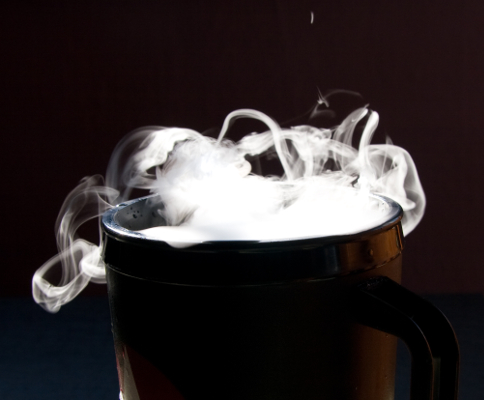Foreboding Fog and Slippery Slime When Science Meets Halloween
Timothy Huneycutt |
October 25, 2013
Halloween is just around the corner, which means it’s time to create some fun in the classroom! We believe creating an engaged classroom is essential for student success, so we contacted our STEM subject matter expert, Jonathan Edquid, to share some exciting activities that students of all ages will not only think are fun, but they’ll learn something important about science as well.
•Creating Slime. Kids love to get dirty and play with their hands, so what better activity is there than creating slime they can play with? There are actually two verypopularrecipes for slime, says Jonathan. One recipe calls for a mixture of Elmer's Glue and Borax solution. The Elmer's glue is a polymer of polyvinyl acetate and the Borax solution contains borate ions. The borate ions will cross link/bond with the polyvinyl acetate so that the polyvinyl acetate molecules (Elmer's glue) will no longer slide past each other as a liquid polymer and instead stick to each other creating an elastomer (polymer with rubber like elasticity). This is a really fun activity that can be done in any classroom, but it is especially relevant to chemistry students, as they are better suited to understanding the chemistry of this mixture.
•Another great way to make slime – and perhaps the most common – is with a cornstarch and water mixture. This creates a non-Newtonian fluid that feels solid when pressure is applied, yet behaves like a liquid when allowed to relax or the pressure is removed. When creating this mixture of slime, students are introduced to the 3 basics states of matter in middle grades; and while this mixture is not a state of matter, it does introduce the idea that there are fluids that do not behave as we would expect (aka, non-Newtonian fluids).
•Creating Fog. If you’re looking to recreate a scene from The Legend of Sleepy Hollow, you will surely need to have a way of creating ominous and foreboding fog, and mixing dry ice with warm water will produce precisely that! When the two ingredients mix, they create a fog of carbon dioxide. Dry ice is solid carbon dioxide. When added to water (warm or otherwise, but warm works best for fog), the heat energy from the water is transferred to the dry ice causing a phase change: the carbon dioxide moves from being a solid to a gas without passing through the liquid phase (this is called sublimation). The gaseous carbon dioxide is visible as a white gas, and since CO2 is denser than the room air mixture, it will stay close to the ground, creating a really neat and spooky foggy smoke effect. And while this is an experiment that’s fun for most everyone, the content is especially appropriate for middle school students when studying states of matter and phase changes.

It’s important to make the learning process as fun as possible, because it creates that emotional connection that is so vital for information retention. We hope these fun activities help make those connections in the classroom, and maybe even spark some interest to cause them to think of some ideas for their own for fun Halloween/science experiments! Whatever the case, we hope everyone has a Spooky Halloween!
Click Here to Check Out More Great (and FREE) Lessons!